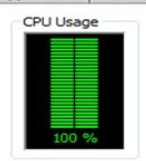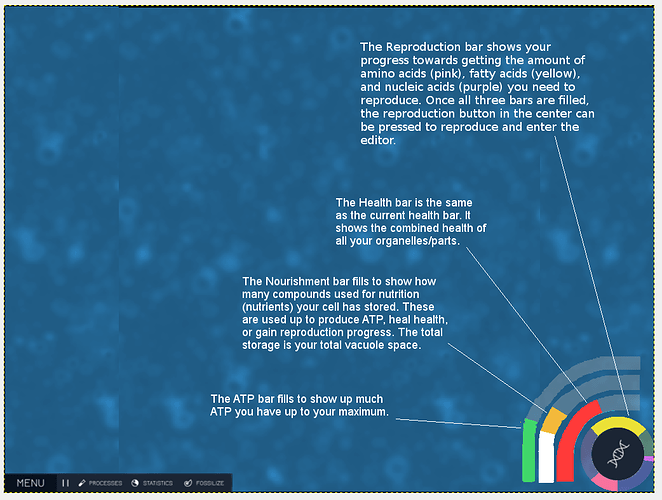Now that I’ve had a chance to rebalance the compounds a bit in the direction that I mentioned in this thread: Improving Thrive's Fun
I think it’s time we discuss whether to implement this into the game. However, before we discuss whether to implement this compound rebalance, I think we should discuss something important I’ve been thinking of about oxygen and carbon dioxide.
Playing with the rebalanced compounds is a lot more engaging I think, but something I noticed is that it’s tough finding enough oxygen AND glucose to survive. Usually you only find one before running out of ATP. There are several ways we could address this, but this reminded me of a particular solution that was a design concept we had planned in the past but never got to.
What if we made oxygen and carbon dioxide omnipresent (like water)? They are absorbed by the cell only when the player needs it. This way you only have to focus on collecting one primary resource according to your type (plant or animal). This is much more realistic, but also gameplay wise I think it’s better if the player has one primary cloud to worry about for survival (glucose) and then a secondary one for reproduction and more advanced functions like agents (ammonia). Also, plants can’t hunt for CO2 like animals for oxygen, and ammonia will already by tough enough for them to find. Having these compounds be abundant would make them only need to worry about soaking in heat spots (and thus mostly be immotile). What is the benefit of having oxygen and carbon dioxide be limited?
In the initial concept, oxygen and carbon dioxide were actually meant to exist in large quantities everywhere (except quite dilute). I guess some point in implementation things got changed. So whether we make oxygen and carbon dioxide passively absorbed and not shown in the environment (like water), or whether we simply make them exist in clouds but be abundant and dilute, the point is to make oxygen and carbon dioxide a lot more common and make glucose and ammonia the main compounds to have to hunt for.
What do you guys think?
NOTE: For anyone who wants to try the Compound rebalancing can find it here http://thrivegame.freeforums.net/thread/1545/compound-rebalance-mod-gameplay

